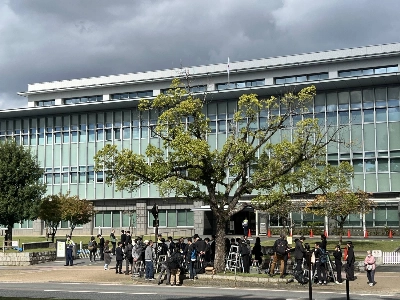Next week will see the great and the good of the ballet world descend on Nagoya for the Fourth Japan International Ballet and Modern Dance Competition. This triennial event, inaugurated in 1993, is unusual among leading international dance competitions in featuring simultaneous classical and modern dance contests. Judges include such luminaries as Michael Denard (formerly etoile, or star dancer with the Paris Opera Ballet and Director of the Berlin Staatsopera), Frank Andersen (Artistic Director of the Royal Danish Ballet), and the legendary Maya Plisetskaya, who danced with the Bolshoi for almost 50 years.
The fierce selection process begins well before the competition does. Of 306 applicants from 40 countries, video screening whittled down the number of performing competitors in the classical category to 101 dancers (performing solo or in pairs) from 20 countries; in the modern category, to 35 dancers from 16 countries. It's perhaps surprising, then, that five places in the classical competition went to dancers from the Northern Plains Ballet, a little-known semi-professional company from Bismarck, North Dakota, in the heart of American prairieland.
So what is going on in this rural area, usually associated more with duck-shooting than with ballet dancing? How did Anthony Noa, a former dancer at the Deutsche Opera, Berlin, who performed the title role in Don Quixote at the Serbian National Theater and who has also taught at well-regarded ballet schools worldwide, become artistic director of a provincial company in a small town in the Midwest cattle-ranching plains?

















With your current subscription plan you can comment on stories. However, before writing your first comment, please create a display name in the Profile section of your subscriber account page.